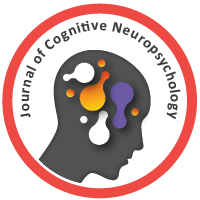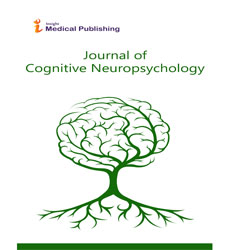Cognitive Neuropsychology of Autism Spectrum Disorders: Social Cognition and Theory of Mind
*Corresponding author:
Sanda Morgan,
Department of Psychology, Lomonosov Moscow State University, Moscow, Russia;
E-mail: sanda.morgan@lomonosov.ru
Received date: January 02, 2025, Manuscript No. ipcn-25-20479; Editor assigned date: January 04, 2025, PreQC No. ipcn-25-20479 (PQ); Reviewed date: January 16, 2025, QC No. ipcn-25-20479; Revised date: January 23, 2025, Manuscript No. ipcn-25-20479 (R); Published date: January 30, 2025, DOI: 10.36648/IPCN.9.1.005
Citation: Morgan S (2025) Department of Psychology, Lomonosov Moscow State University, Moscow, Russia. J Cogntv Neuropsych Vol: 9 No: 1.5
Introduction
Autism Spectrum Disorders (ASD) is a group of neurodevelopmental conditions characterized by impairments in social interaction, communication, and the presence of restricted or repetitive behaviors. Although the manifestations of ASD are highly heterogeneous, difficulties in social cognition are among its most consistent and defining features. Social cognition refers to the ability to perceive, interpret, and respond appropriately to the intentions, emotions, and behaviors of others, a skill critical for successful social functioning. Within the field of cognitive neuropsychology, one of the most extensively studied aspects of social cognition in ASD is Theory of Mind (ToM) the capacity to attribute mental states such as beliefs, desires, and intentions to oneself and to others. Deficits in ToM are widely recognized as a core cognitive mechanism underlying many of the social difficulties observed in individuals with autism. By linking behavioral studies with neural and cognitive models, cognitive neuropsychology has significantly advanced our understanding of how atypical brain development contributes to these social impairments [1].
Description
Theory of Mind is crucial for predicting and interpreting the behavior of others, and its development typically emerges in early childhood. Classic â??false beliefâ? tasks, such as the Sallyâ??Anne test, have shown that many children with ASD struggle to recognize that others may hold beliefs different from their own. This deficit has been described as a â??mindblindnessâ? hypothesis, suggesting that individuals with autism find it difficult to intuitively represent other peopleâ??s perspectives. Cognitive neuropsychology frames ToM deficits as a central explanatory mechanism for the social and communicative challenges in ASD, although researchers also acknowledge the role of broader executive dysfunctions, such as impaired cognitive flexibility and inhibition, which can exacerbate ToM difficulties [2].
Neuroimaging studies have identified a network of brain regions involved in Theory of Mind, including the medial prefrontal cortex, temporoparietal junction (TPJ), superior temporal sulcus, and amygdala. In individuals with ASD, functional and structural abnormalities in these areas have been consistently reported. For example, reduced activation in the medial prefrontal cortex and TPJ during ToM tasks suggests impaired neural specialization for processing social information. The amygdala, crucial for emotional salience and social cue processing, also shows atypical responses, potentially contributing to difficulties in interpreting facial expressions and emotions. Cognitive neuropsychology integrates these findings to explain how disruptions in brain circuits map onto the behavioral manifestations of social cognition deficits in ASD [3].
While ToM deficits are central, individuals with ASD often show broader impairments in social cognition, including reduced empathy, difficulty recognizing emotional expressions, and challenges with joint attention. Importantly, not all individuals with autism fail ToM tasks, and many can pass explicit reasoning-based tests yet still struggle with spontaneous or intuitive social understanding in real-world contexts. This suggests that ASD may involve a distinction between explicit (deliberative) and implicit (automatic) social cognition, with the latter being particularly impaired. Cognitive neuropsychology emphasizes the interaction between these cognitive processes and highlights the variability across the autism spectrum, showing that ToM deficits are not universal but exist alongside other cognitive profiles [4].
Understanding the cognitive and neural underpinnings of social cognition in ASD has direct implications for intervention. Therapies that explicitly target ToM and perspective-taking, such as social stories, role-play, and computer-based ToM training, aim to strengthen social understanding. Interventions focusing on emotion recognition, joint attention, and pragmatic language also build on neuropsychological insights into social cognition. Additionally, educational strategies informed by cognitive neuropsychology encourage structured, predictable environments that reduce reliance on implicit ToM abilities. While no single approach fully addresses the complexity of ASD, interventions grounded in cognitive models of social cognition hold promise for improving social functioning and quality of life [5].
Conclusion
The cognitive neuropsychology of autism spectrum disorders highlights the central role of social cognition and Theory of Mind in understanding the social challenges faced by individuals with ASD. Deficits in ToM, underpinned by atypical development of neural networks such as the medial prefrontal cortex and temporoparietal junction, contribute significantly to difficulties in perspective-taking, empathy, and emotional understanding. Yet, ASD is highly heterogeneous, and not all individuals exhibit the same cognitive deficits, underscoring the need for nuanced, individualized approaches. By bridging behavioral findings with neural mechanisms, cognitive neuropsychology provides both theoretical clarity and practical pathways for intervention. Continued research in this field promises to refine our understanding of social cognition in ASD and to inform more effective educational and clinical strategies.
Acknowledgment
None.
Conflict of Interest
None.
References
- Espelöer J, Hellmich M, Vogeley K, Falter-Wagner CM (2021). Brief report: Social anxiety in autism spectrum disorder is based on deficits in social competence. J Autism Dev Disord 51: 315-322.
Google Scholar Cross Ref Indexed at
- Fink E, Begeer S, Peterson CC, Slaughter V, de Rosnay M (2015). Friendlessness and theory of mind: A prospective longitudinal study. Br J Dev Psychol 33: 1-17.
Google Scholar Cross Ref Indexed at
- Lam CB, McHale SM, Crouter AC (2014). Time with peers from middle childhood to late adolescence: Developmental course and adjustment correlates. Child Dev 85: 1677-1693.
Google Scholar Cross Ref Indexed at
- Bornstein MH, Hahn CS, Haynes OM (2010). Social competence, externalizing, and internalizing behavioral adjustment from early childhood through early adolescence: Developmental cascades. Dev Psychopathol 22(4), 717-735.
Google Scholar Cross Ref Indexed at
- Sun X, Allison C, Matthews FE, Sharp SJ, Auyeung B, et al. (2013). Prevalence of autism in mainland China, Hong Kong and Taiwan: a systematic review and meta-analysis. Mol Autism 4: 7.
Google Scholar Cross Ref Indexed at

Open Access Journals
- Aquaculture & Veterinary Science
- Chemistry & Chemical Sciences
- Clinical Sciences
- Engineering
- General Science
- Genetics & Molecular Biology
- Health Care & Nursing
- Immunology & Microbiology
- Materials Science
- Mathematics & Physics
- Medical Sciences
- Neurology & Psychiatry
- Oncology & Cancer Science
- Pharmaceutical Sciences
